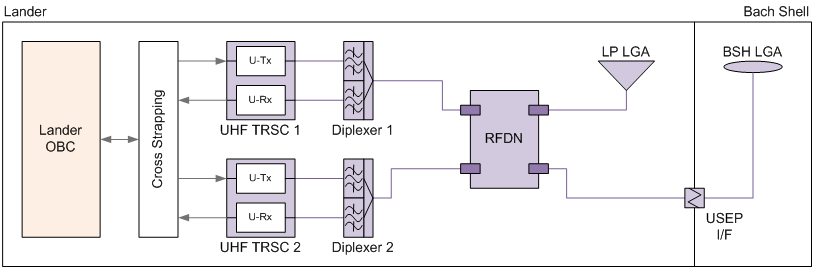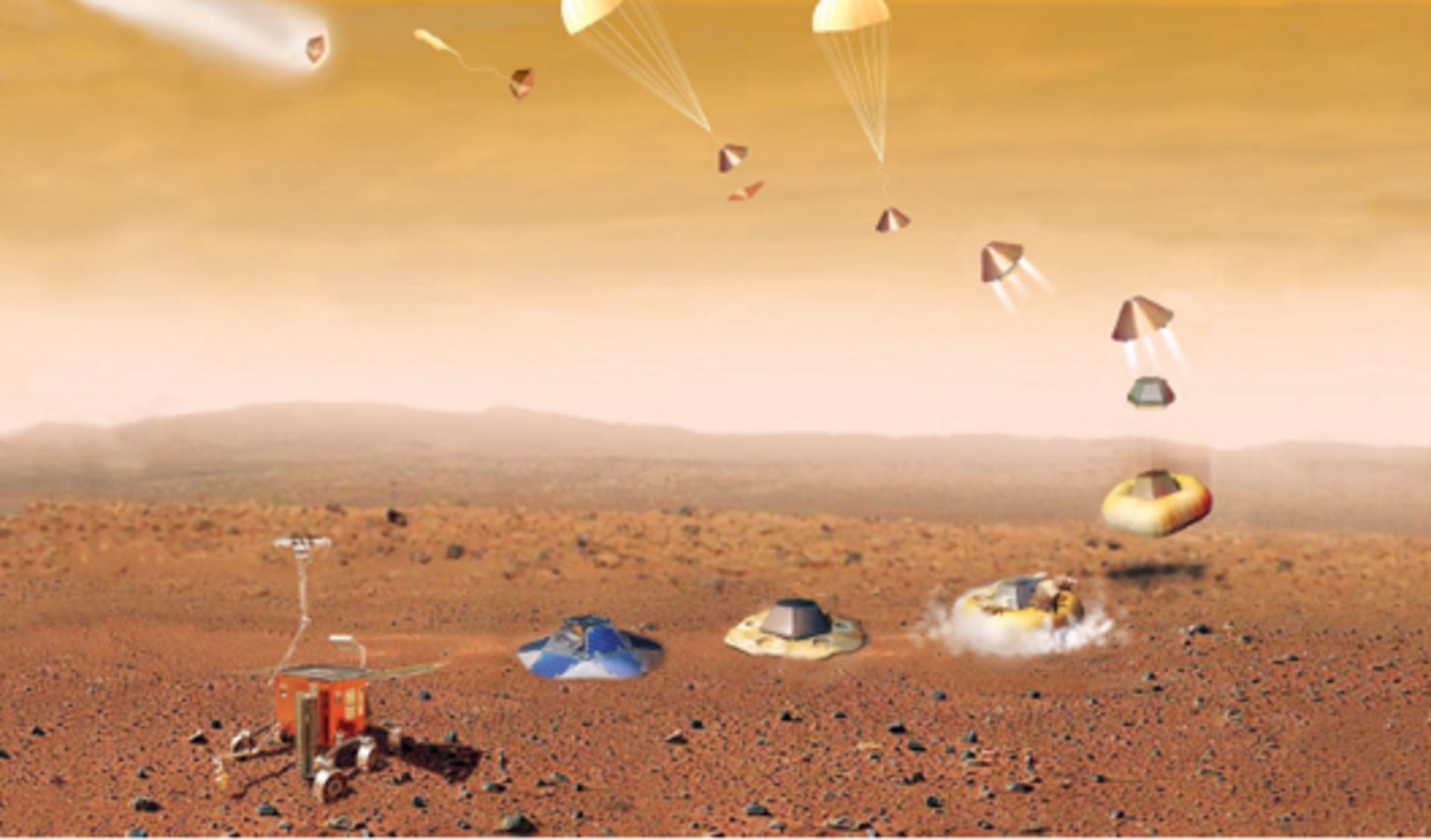Entry, Descent and Landing Communication Technology Assessment (ECOMTEC)
| Programme: | TRP Workplan | Achieved TRL: | 3 |
| Reference: | T906-008ET | Closure: | 2017 |
| Contractor(s): | Thales Alenia Space Italia (IT), Callisto Space (GB), Zelinda Ltd (IE) | ||
After the Beagle failure it has been recommended that future ESA missions implement means of providing essential telemetry data related to events occurring during the critical Entry, Descent and Landing (EDL) phase of the lander, to allow a subsequent investigation should a mission anomaly occur. It is therefore mandatory that future missions implement a communications system capable of transmitting information during the EDL phase. This requirement has become even more fundamental after the ExoMars 2016 experience where the unfortunate unfolding of events has been reconstructed only thanks to the telemetry data the lander Schiaparelli has been able to transmit to the TGO orbiter. The availability of an orbiter, however, cannot always be guaranteed (it might not be visible during this critical phase), therefore it is necessary to develop solutions that allow for the transmission of information from the lander during this phase directly to Earth (DTE link).
The EDL phase is very short, lasting around 6 minutes and it is characterised by extreme conditions (e.g. extreme heating and acceleration) that cause unknown signal dynamics in terms of amplitude variation, frequency shift (Doppler) and frequency change rate (Doppler rate). Additionally, the signal dynamics are affected by the mission characteristics and chosen lander design; for instance it depends on the target planet/moon, the entering and descending profile, the use of parachute or other descent control means, airbags, etc.

Objective(s)
The main objectives of the EDL Communications Technology (ECOMTEC) Assessment study were to:
- Propose end-to-end system architectures, operating either in UHF or X-band, demonstrating the feasibility of DTE reception of telemetry data during EDL phases (with a focus on the most challenging atmospheric entry);
- Investigate ground segment architectures that would enable much improved spacecraft tracking accuracy during EDL phases. This objective was pursued considering the combination of large aperture radio telescopes operating as Very Large Baseline Interferometry (VLBI) receivers, and exploiting Same Beam Interferometry (SBI) techniques;
- Identification of critical TT&C technologies for on-board and on ground hardware/software that will require further de-risking bread boarding prior to future development;
- Provide a simulator capable of reproducing the end-to-end performance of the EDL scenario.
Achievements and status
The main achievements of the ECOMTEC Study are:
-Derivation of a set of DTE communications requirements for future EDL missions applicable to atmospheric and non-atmospheric scenarios;
-Specification of two baseline DTE end-to-end communications architectures suitable for either UHF or X-Band;
-Specification of a set of TM modulation schemes suitable for TM transmission in extreme RF environments (low S/N0 and high Doppler dynamics);
-Specification of a ground processor capable of operating in the same extreme RF conditions (Doppler shift uncertainty as high as 50 kHz, Doppler rate uncertainty as high as 1000 Hz/s and S/N0 as low as 15 dB-Hz);
-Development of an end-to-end communications performance simulator suitable for preliminary evaluation of future DTE communications architectures.
Benefits
The activity results have demonstrated that it is possible to establish a reliable direct to Earth communications link during the Entry, Descent and Landing phase (EDL); any future missions implementing an EDL link will benefit from the proposed system and will be able to use the simulator tool to assess the performance of the link.















 Germany
Germany
 Austria
Austria
 Belgium
Belgium
 Denmark
Denmark
 Spain
Spain
 Estonia
Estonia
 Finland
Finland
 France
France
 Greece
Greece
 Hungary
Hungary
 Ireland
Ireland
 Italy
Italy
 Luxembourg
Luxembourg
 Norway
Norway
 The Netherlands
The Netherlands
 Poland
Poland
 Portugal
Portugal
 Czechia
Czechia
 Romania
Romania
 United Kingdom
United Kingdom
 Slovenia
Slovenia
 Sweden
Sweden
 Switzerland
Switzerland




























